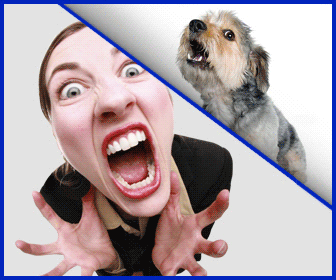How to feed dogs
How to feed dogs?
The type of food provided to dogs varies according to the size and age of the dog, so the amount of food to be provided to a dog of small size differs from the large, and age also plays a major role in determining the type of dog food.
Feed small puppies
The process of feeding newborn puppies in the first three months needs careful care; the breeder must start converting the puppy from the diet of mother's milk to the puppy's diet gradually and regularly by removing it for short periods and then long from his mother. The importance of this step lies in making the puppy gradually move away from the care of the mother. This process is called weaning, preferably in the third or fourth week.
There is no need to feed the puppy any additional food before weaning, but if the mother is sick and does not produce enough milk, artificial milk or the veterinarian is used as a guide. During weaning the dog begins to feed processed foods intended for dogs and moistened with warm water, and food is frequently given after weaning to maintain blood sugar level, and if any side effects, such as diarrhea and vomiting, occur, see your veterinarian as soon as possible.
Feeding adult dogs
Adult dogs should have enough food to meet their energy needs and replace body cells and tissues. The amount of food provided to the dog must be proportional to its size and energy so that it does not exceed his need and causes diseases caused by the accumulation of fat, and not less than his needs, and he suffers from wasting and weakening. The dog's activity varies depending on its type and movement, so the breeder must determine the amount of food sufficient for his dog's body.
The amount of food required for the dog can be determined from the veterinarian, and this amount may increase in the winter, or when the dog is carrying out the additional activity, or if he is infected with a disease. It is usually recommended to provide two meals per day for an adult dog, with a period of between 8-10 hours.
This method helps control animal behavior.
Some divide meals into three meals: breakfast, lunch, and dinner, and each meal have its scheduled date, and it varies according to the type and age of the dog. It is provided during meals that contain raw eggs to be a special meal for dogs that practice violent exercises and is served after the sixth month of the dog’s life. As for the meal in which the flesh and bones are given to the dog daily to strengthen his jaws and meet his need for protein and is given, it can be replaced Dinner with the rest of the lunch, but not every day, up to the age of six months.
Types of dog food
With different types of dogs and their sizes, there are special foods for them that have become available in the market with different types, and all the breeder has to do is put the dog's ready food on specific dates. There are three different types of dog food:
- Eating dry: It consists of fats, vitamins, bone meal, and some dry meat, in addition to minerals, carbohydrates and some salts in suitable quantities, as they are mixed together in the form of balls in small sizes. This type is distinguished as it prevents weight gain, in addition to containing all the necessary nutrients.
- Canned food: It is a food consisting of a mixture of rice, meat, ground bones, vitamins, and salts, but this food is very expensive.
- Domestic eating of dogs: This food is characterized by being made by the breeder and increases the dog's attachment to humans, and it is not expensive, because it is mostly leftover from human eating.
Read Also:How to breed Puppies?
General notes on feeding dogs with a breeder
Domestic dogs adhere to some important observations in maintaining good dog health, and these include:
- The meal should be medium to warm. Liver food is twice a week, so uric acid does not increase in the body.
- Avoid leftovers from the home that contain large amounts of salts or fats, especially before the age of six months.
- Teach the dog to wait until the eating is placed in front of it and then instruct it to eat, so as not to jeopardize the breeder.
- Provide good and clean water for the dog, and keep it renewed continuously.
- Not giving the dog any additional meals that may cause the body to increase fat, and consequently, it will gain more weight than normal.






